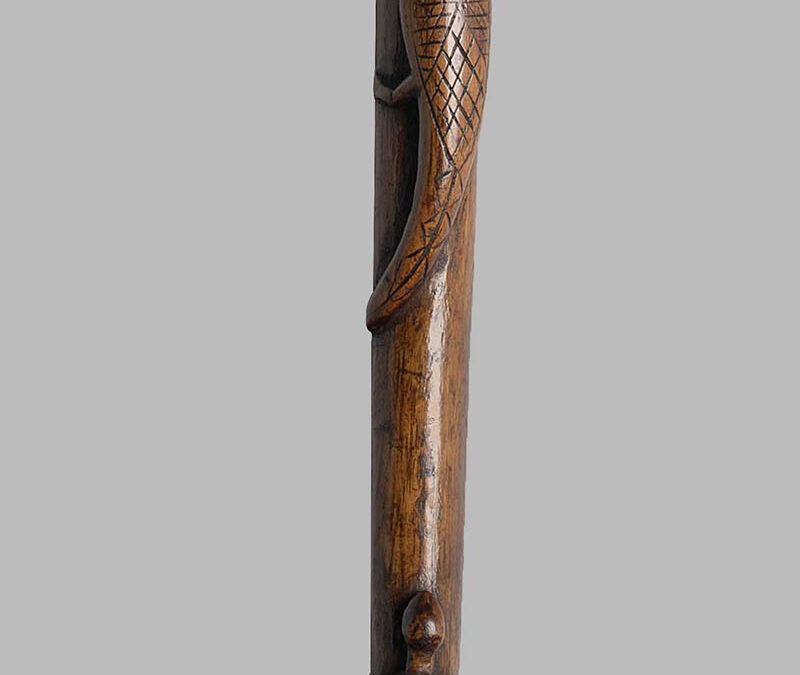Walking Stick

| Maker | Henry Gudgell |
| Date of Creation | c. 1865 |
| Location | Livingston County, Missouri |
| Materials | Wood |
| Institution | Speed Art Museum |
| Credit Line | Purchased with funds from the Alice Speed Stoll Endowed Art Acquisition Fund; Gift of Anna and Allan Weiss; Museum purchase, by exchange; Gift of Mr. and Mrs. Jouett Ross Todd, Gift of Dr. Scott W. Cole, Gift of the William S. Kahnweiler Collection, presented by his wife, Mary Steele Tillman, Bequest of Miss Carolyn Apperson Leech, Gift of Mrs. Clifford Alderson, by exchange |
| Accession Number | 2023.27 |
| Photo Credit | Bill Roughen |
This vibrant, reptile-clad walking stick was created by the Kentucky-born artist Henry Gudgell (1826 or 1829–95) around 1865 when he was in his thirties and living in rural Livingston County, MO. Gudgell was born into enslavement in central Kentucky’s Anderson County, the son of Rachael who was 15 or 16 years old at the time of his birth. When Henry was still an infant, he, his mother, and other enslaved women, children, and men were forcibly removed to Ray County, MO. In 1853, Henry, then in his twenties, was again forcibly separated from his community when he was sold to another Missouri family. Henry survived his enslavement through strength, skill, and courage. After the Civil War and emancipation, he and his spouse, Chloe Woodus, who were married while still enslaved, purchased land in rural Livingston County, MO, where they raised their family. Henry’s talents led him to become a successful wheelwright and metalsmith. He likewise harnessed his artistic gifts to craft this remarkable walking stick, one of only two made by him that are known to survive (the other is in the collection of the Yale University Art Gallery). Though separated by thousands of miles and different settings, Henry Gudgell’s walking stick and many carved staffs made by Kongo and Wyo artists in Central Africa share aesthetic elements, most notably, their size, format, and reptilian ornament among other details. Thus, they also share a cultural continuum within the African diaspora. Professor Regenia A. Perry, a scholar of African American art history, puts it this way: walking sticks like Henry Gudgell’s show that the “spiritual and stylistic kinship with African prototypes has been continuous.”

